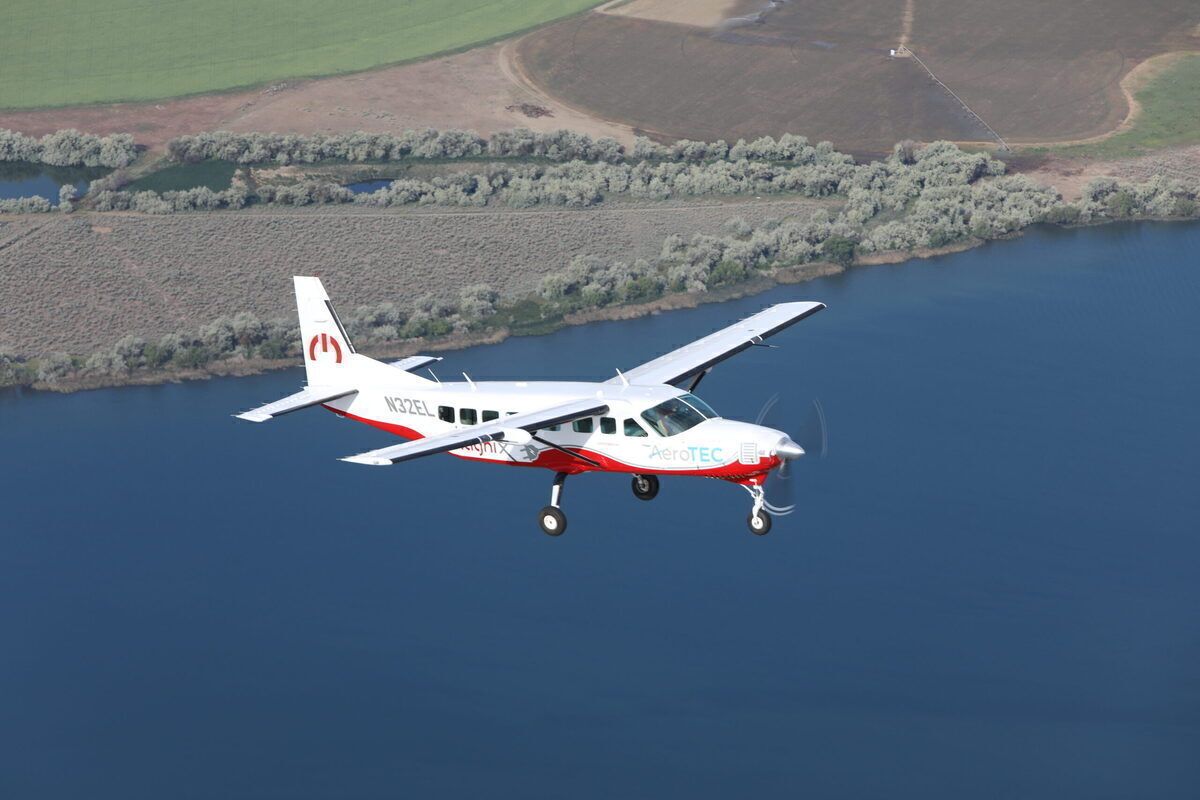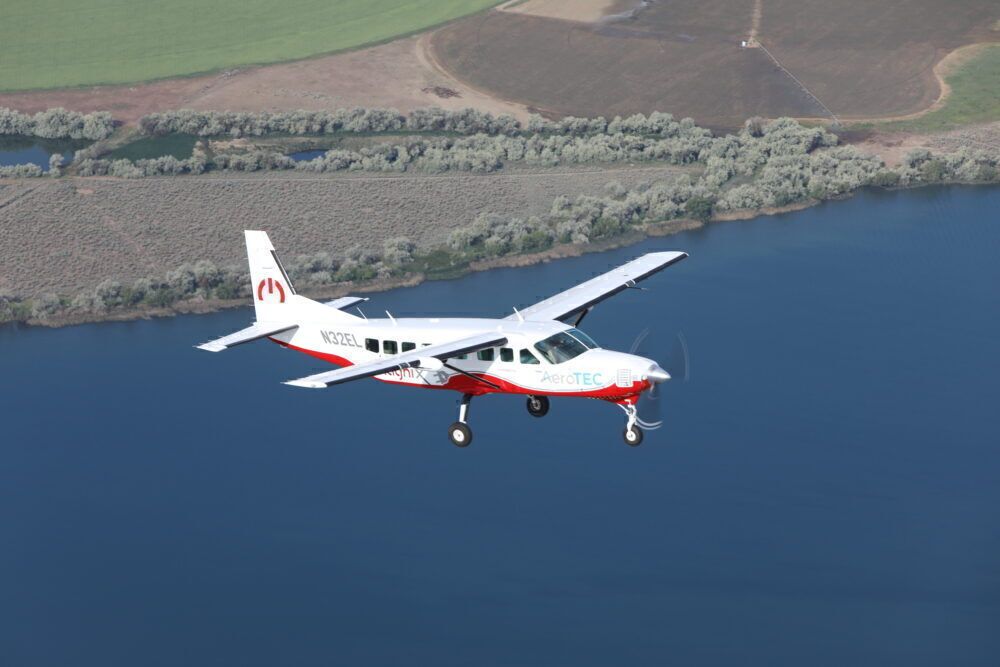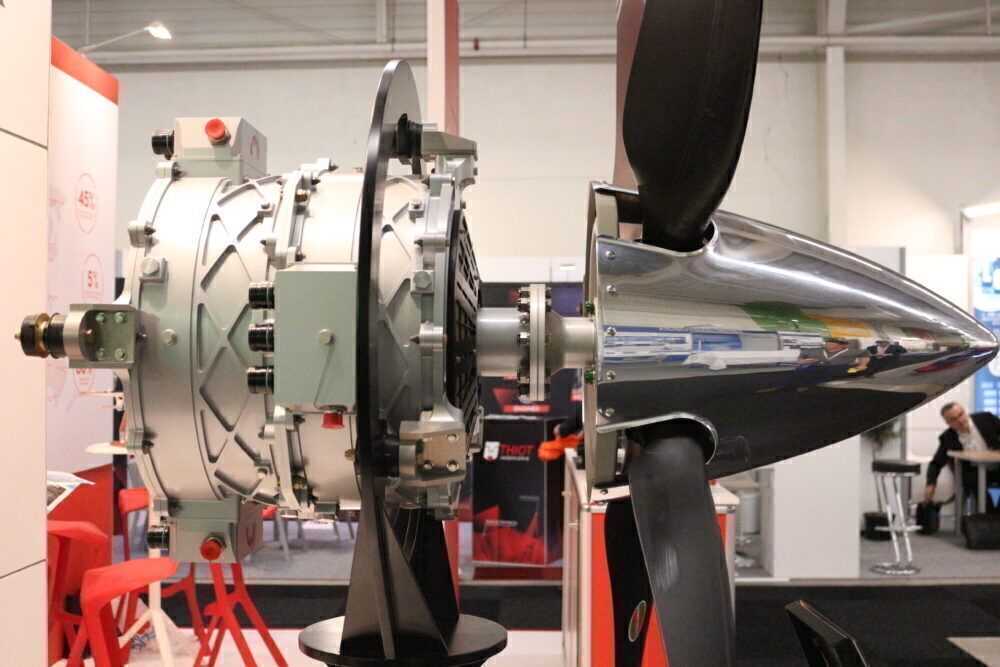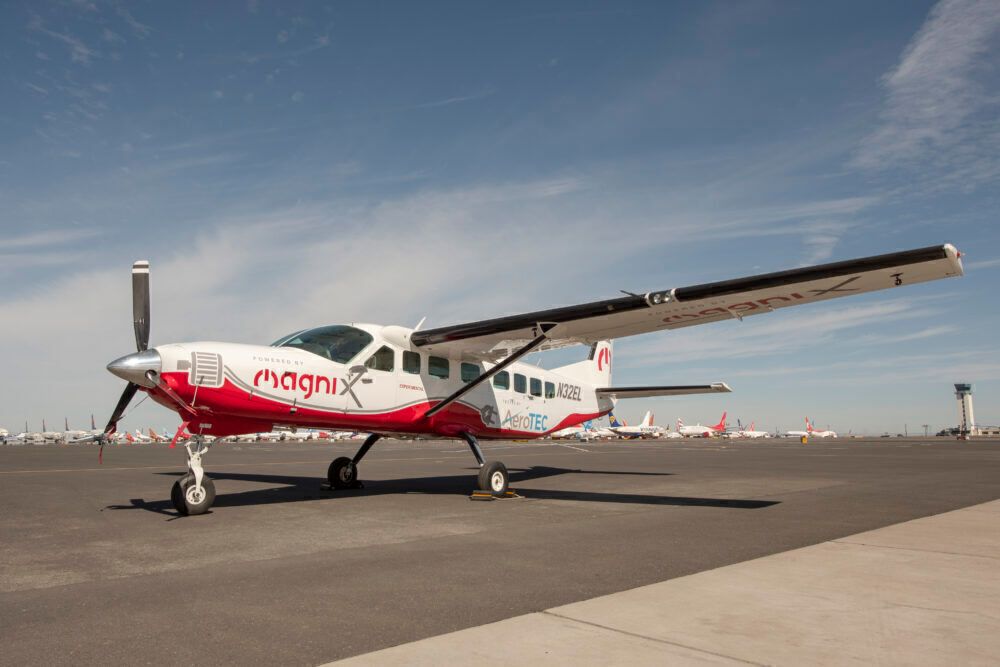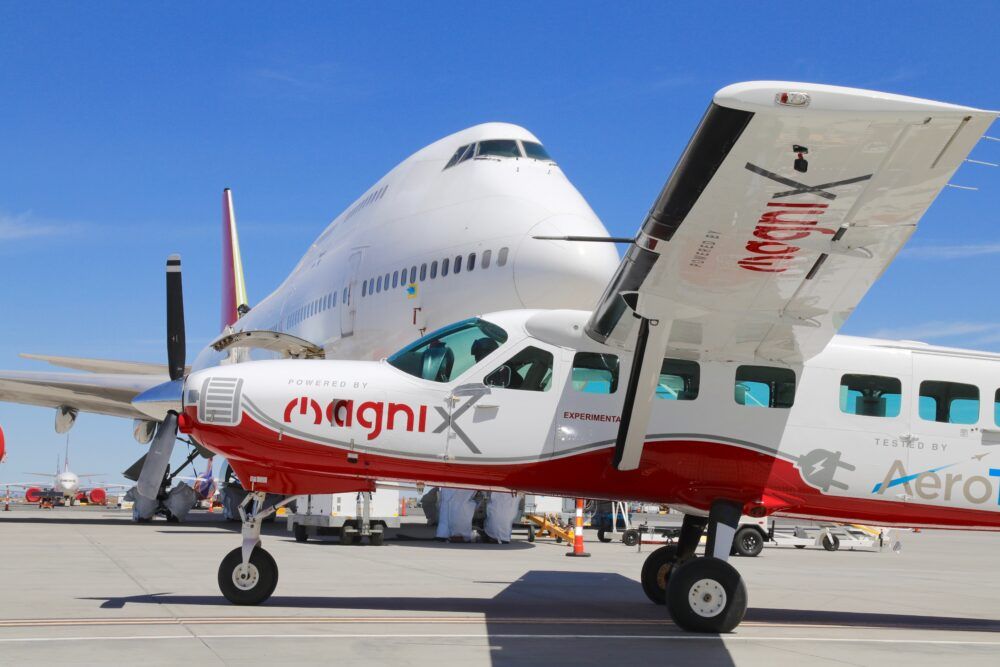Electric aircraft technology is rapidly progressing across the industry, with several successful engine tests already completed. Airlines and authorities are keen to cut down emissions and increase efficiency on their operations, and electric planes are a key way to reach these targets.
Amid these future transformations, electric propulsion system manufacturer magniX feels that the aviation industry needs to overhaul its way of thinking when it comes to routes. Simple Flying spoke with the company’s CEO, Roei Ganzarski, to learn more about the prospects.
Walking before running
magniX is working on aircraft that range from six to 40 passengers, all with a range of between 100 to 500 miles. So the sort of routes that can be expected to be operated with these planes wouldn’t be the likes of London to New York or LA to New York. They would be deployed on much shorter services.
The business is keen on firstly addressing small, regional services, which it shares represent approximately 50% of all global flights. After the network is in place, and battery and hydrogen fuel cell technology has advanced, then the electric scene will level up to bigger planes.
“It's like saying when Tesla started, "oh why would you do an electric car, there's no way you can do a semi-trailer that can cross the country." I'm not trying to do a semi-trailer that can cross the country. I'm trying to do a small electric car, then we'll grow into it. Lo and behold, today, 10 years after introducing Tesla, they're talking about semi-trailers,” Ganzarski expresses.
“So, for some reason in aviation everyone's jumping, "oh, electric isn't good because you can't do a 737, or an A330-size aircraft across the Atlantic." Yeah, no one's trying to do that. That's not possible in the next 30 to 50 years, so why are we even talking about it? Let's focus on what we are talking about, which are smaller planes.”
Rethinking the approach
A notable challenge for electric aircraft firms is that everyone is thinking about aviation from the lens of a narrowbody, which is what would take someone on a route such as from London to Paris, because of what the airlines and the OEMs have trained the industry to get used to.
However, to fly between major airports, passengers may have to stand in line for an hour ahead of time due to security checks to get on a 45-minute flight to another airport that may be 45 minutes away from the actual city. This is a process that the industry has become accustomed to.
Therefore, when there are prospects of new propulsion, speculators generally compare the future to today’s market, which Ganzarski believes is the wrong thing to do. Overall, the new technology is going to open up new opportunities to change the way airlines operate today, so the concerns become less significant.
Changing the game
Notably, according to Ganzarski, only 1.6% of trips less than 500 miles are conducted by air. magniX strives to increase this figure, as many passengers are driving for hours between their home and their nearest suitable airport when traveling. This process is not only inefficient for fliers, but with the numbers adding up, this factor contributes to emissions.
“Let's take a London City to Manchester flight. If it’s a 100-seater plane, is it fulll? Usually it's 70-80% if it's really good. A lot of times it's less than that, but let's say 75% just for average. How many of those 75 people on the flight actually live in and around London city versus those who drove up to an hour to get to London City? And then, how many people are actually living around Manchester Airport versus those who will drive now up to an hour or more to their destination? And are there closer airports on both those ends?” Ganzarski shares.
“So imagine now, an airline, it doesn't have to be an existing one, it could be a new operator, says wait a minute, if instead of having to fill 75 seats on a plane, I only had to fill seven out of nine or 12 out of 16, or 30 out of 40, maybe I could change the way I think and not fly from London City to Manchester.
“Maybe I could fly from Blackbushe to Cardiff, or another airport, that's much smaller anywhere in between. Because it's a much smaller plane, it will cost me 40 to 80% less per flight hour to operate. Then, I can start doing these small routes, and be even more profitable than the ones striking up the big routes.”
Additional benefits
Ganzarski adds that since airlines would be deploying smaller aircraft on numerous smaller routes, they can then use 50-seater aircraft on city-to-city short and medium-haul routes rather than 100-seaters, which will help to cut costs further. Therefore, they can deploy their 100-seaters more effectively on the hub-to-hub long-haul journeys due to their high ranges. The executive summarizes that it’s all about introducing the right equipment for the right mission.
Opening up air travel
Altogether, magniX strives to make flying even more accessible with its innovations. The company highlights that due to the smaller sizes, these planes don’t need big gates and the passengers would naturally be traveling lightly so they can avoid baggage reclaims.
Moreover, in several regions, the aircraft don’t require the exact same security checks with hand luggage as commercial jet services, speeding up boarding processes. So, the firm envisions that flying will be more casual than it is now and be an everyday experience for those traveling from town to town.
Stay informed: Sign up for our daily and weekly aviation news digests.
In the not-so-distant future, the aviation industry could look a whole lot different, especially as airlines replan their strategies following the pandemic. magniX’s leadership believes that batteries will eventually be used for smaller planes on short distances and hydrogen fuel cells will be fitted on midsize aircraft on medium distances.
For now, the larger planes on long-haul routes will continue to use traditional jet engines while airlines turn to sustainable fuels. However, as electric aircraft technology evolves, it won’t be a surprise to see a breakthrough in this field sooner than later.
After all, we can look back at how quickly aircraft tech evolved at the turn of the 1900s. We went from the Wright Flyer, which covered less than 1,000 feet, to a de Havilland Comet, which covered 1,300 nautical miles, in less than half a century. Similarly, electric aircraft industry is still in its infancy, so it will go through several developments over the next few decades.
What are your thoughts about magnix’s plans with its electric aircraft? Do you see a shift in network patterns in the future? Let us know what you think in the comment section.

